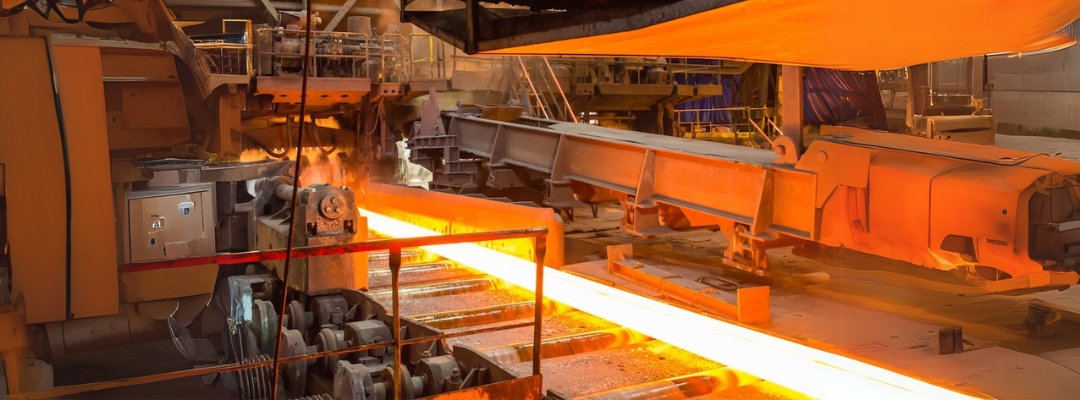Present day steel factories are very complicated and the lifting uses of those plants are quickly advancing toward semi-or full automation.
Cranes are intended to give you full control, execution, and adaptability, whether you pick manual, semi-automated or completely automated working.
We make two kinds of automated cranes. In the semi-automated model, the administrator keeps up with manual control with different elements helping.
On a completely automated crane, the administrator characterizes the settings, and the crane capabilities minus any additional human information. This is especially helpful in the requesting and dangerous climate of metals creation.
With the ascent of modernization and innovation, numerous enterprises have started to take on and embrace modern automation frameworks to expand effectiveness and efficiency at work.
The huge reception of these frameworks has seen the modern automation market developing universally, coming to $191 billion out of 2021 and expected to develop to a faltering $395 billion by 2029, as indicated by Fortune Business Experiences.
While most modern makers as of now comprehend the developing worldwide reception of modern automation frameworks, many don’t have a decent handle of the various sorts of automation frameworks and how each can help an organization.
Whether it’s distribution centre automation or automated transport frameworks, various kinds of automation can help various sorts of organizations.
Which applications bring the most advantage?
Steel plant lifting applications are quickly turning out to be more automated. The advantages are irrefutable: tasks can be coordinated to the second with less work, crane wear and less blunders. Automation is best for dull cycles in which the potential for human blunder to pump the brakes can be disposed of.
Full automation for scrap, projecting and section taking care of- completely automated cranes are as of now normal in ceaseless cycles, for example, projecting and chunk dealing with.
Automation can diminish costs by streamlining accessible space with more limited travel ways. Programmed developments and cycles limit the potential for human blunder.
Moving to and from between scrap receptacles and the heater, scrap taking care of cranes areas of strength for are for full automation.
Full automation for loop taking care of and handling
Plunge tank and loop stockpiling activities are especially appropriate for full automation. On the off chance that a manual administrator adds even an additional one second, that time can amount to 10 full cycles in a 24-hour shift. On the other hand, a standby period that is too short can cross-taint tanks, bringing about costly changeover and item squander.
While setting up automation requires testing for every individual office and its cycles, the drawn-out profit from venture is huge, with critical investment funds on support and work costs.
Modern automation utilizes control frameworks, generally PCs or robots, to deal with manufacturing cycles and machines to supplant people. These frameworks can work modern hardware naturally and commonly incorporate input circles and tactile projects that can change working circumstances consequently to meet the ideal qualities in view of continuous information.
Benefits include:
Most noteworthy lifecycle an incentive for hardware, lessens chance of task breakdown and disappointment, further develops security of gear, burdens and faculty, bigger volume of throughput etc.
It also increases the dependable and unsurprising cycles, lessens working expenses, lessens administrator weakness and creates a more secure, quicker load dealing with safeguarding individuals and items.
Whenever you move a heap, there is a little opportunity that it won’t go where it ought to, with conceivable security or creation outcomes.
Production control (booking and set-up) in the metallurgical pieces of an iron andsteelwork is primarily finished in a feed-forward way by specialists and professionals.Programmed criticism control is confined to regulators for streams, pressures,temperatures, etc, of some fundamental interaction factors.
In moving cycles and handling lines, programmed criticism control methodologies are morerefined: there are for example progressed and complex plans for controlling thethickness and levelness of strip in hot and cold moving plants.
There isn’t room here toportray them exhaustively.In generally automation frameworks, PCs, programmable regulators, and miniatureregulators are associated as a neighbourhood to play out allcorrespondences from the venture level down into the plant as well as the other way around in anideal way.
According to the perspective of biology and natural insurance, steel is quite possibly of the bestmaterials to utilize. An impressive piece of gear made of steel (like vehicles,coolers, and modern reactors) can be reused as scrap for new steel items.
Thesteel hardware or parts that are not reused consume (rust) rapidly and don’tleave backrest items that are poisonous or generally destructive to the climate.
It isn’t right to discuss “steel” as a solitary substance. It is conceivable, by alloying accuratecombinations of Mn, Cr, Ni, Mo, V, Si, P, and S, to give a specific kind of steel verydevoted properties of purpose.
There are for example underlying, rust-less, high-temperaturesafe, and numerous different sorts of steel. The German public guidelines recognizearound 7000 sorts of steel. So, a specific sort of steel is like an “inorganic plastic”.
The always developing requests of clients and makers for the nature of steel itemscan’t be satisfied without automation. According to the perspective of current control hypothesis,iron and steel works contain exceptionally complex multivariable cycles.
The automation issues to be managed range from issues of traditional controlhypothesis of direct and nonlinear, single, and multivariable frameworks in process control, toinquiries of functional examination underway control. Concerning software engineering,complex working frameworks must be applied for process control purposes.
They need to begin and stop unique program modules (“errands”) consequently, withoutthe administrator, to satisfy the purported “ongoing condition”: the PC should haveresponded totally in an obviously characterized most extreme time (cut-off time) to an occasion in theprocess.
The cut-off times range from certain minutes on account of a shoot heater to a couplemilliseconds in a virus moving plant, and for some unique drive controls, microseconds.

